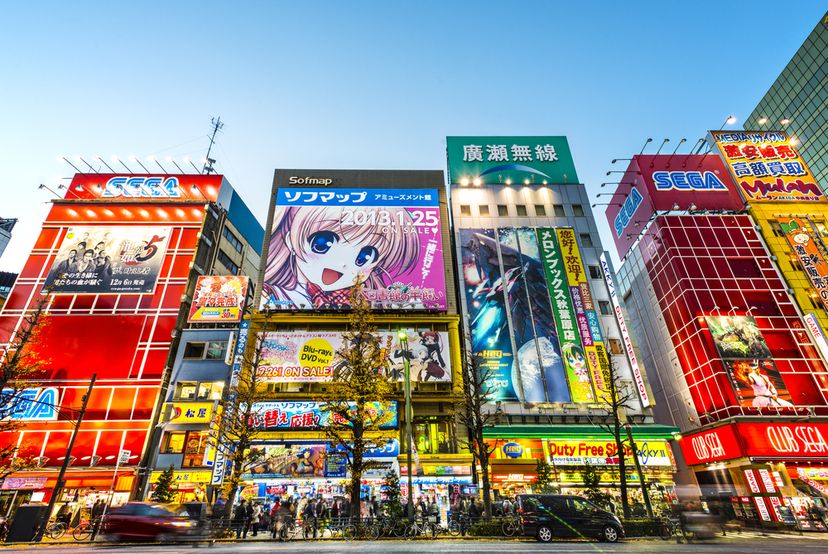
Tokyo, once known as Edo, is the capital of the land of the rising sun, Japan. A high-density metropolis in the midst of the Pacific, Tokyo is a fascinating cosmopolitan city that combines an advanced economy with centuries of tradition, melding them into one of the most unique experiences in the world. A mecca for those of Japanese descent abroad, as well as anime and manga fans, Tokyo deserves a spot on any traveler’s list of “must-see” destinations for a whole host of reasons. From cherry blossoms to sushi, from sake to shopping, Tokyo boasts many sights, sounds and flavors, many of which are at once familiar and unique. Whether you’re on a business trip, teaching English abroad or making a pilgrimage to the home of Sailor Moon and Gundam, there are many things to see and do in Tokyo. This list of 12 activities and sights is but a drop in the bucket!
Advertisement
12. Go Shopping in Ginza
Who wants to go shopping?! Ginza is renowned as one of the most luxurious shopping districts in the world. This upscale area was built on a swamp in the 16th century and originally used as a mint during the Edo (or Tokugawa) era. In the 19th century, the Japanese government tried to “modernize” the district along Western lines after a fire destroyed most of the existing structures in 1872. Gradually, newspapers and magazines opened offices here and, between the World Wars, it became popular amongst locals to “kill time” in Ginza. The district became renowned for its window displays and soon attracted both shoppers and stores alike.
Today, Ginza is home to the flagship stores of large companies like Sony and also boasts many designer and haute couture brands, such as Carolina Herrara and Louis Vuitton. On Saturdays and Sundays, the roads are closed to vehicles between 12 noon and 5 p.m., making the area a “pedestrian haven” for shoppers. Ginza is home to several major department stores, including the Wako Department Store. There are also several art galleries in the area.
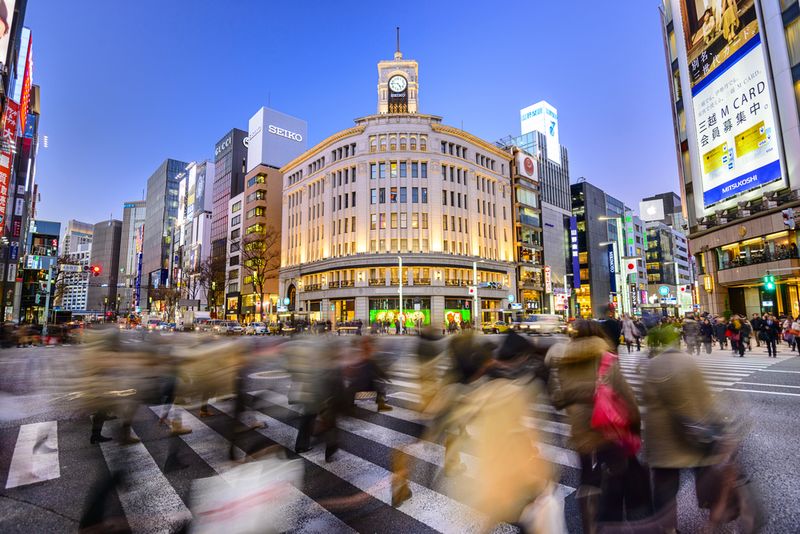
Advertisement
11. Climb Tokyo Tower
For anyone who has watched an episode of Sailor Moon or a Godzilla film, one of the most prominent landmarks in the background shots of Tokyo will be Tokyo Tower. This iconic landmark is currently the second-tallest structure in Tokyo, reaching a height of 1,093 feet. The tower was originally erected in 1958, after NHK, Japan’s public broadcaster, began television broadcasts. The tower is a support for a large antenna, which allows broadcasters to reach wide swaths of the Kanto region.
The tower functions not only as a broadcast tower for television and radio, but as a major tourist attraction. Two observation decks are visited by thousands of tourists annually. The tower is painted bright white and international orange, making it highly visible during the day. At night, the tower is lit up with various lighting schemes, depending on the season and event. Visitors can view Tokyo from either of the 2 observation decks and visit FootTown, an attraction underneath the tower that includes an aquarium, restaurants and shopping, as well as museums and small rides for children.
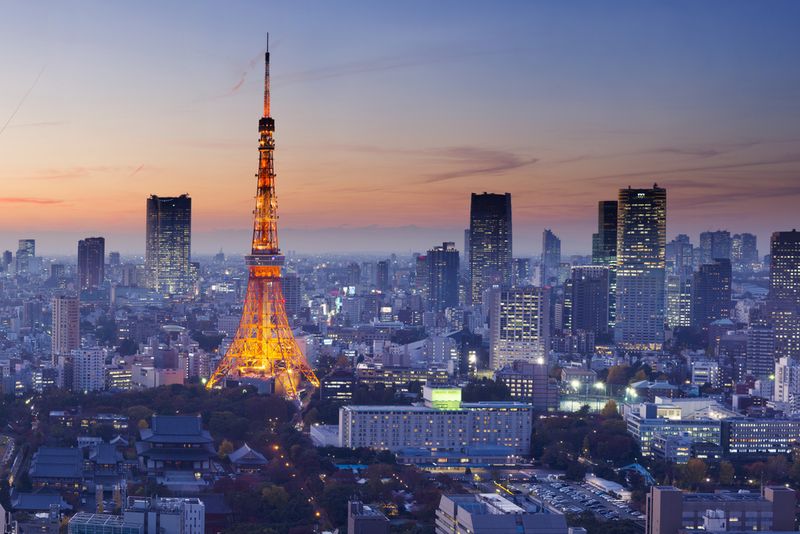
Advertisement
10. Hang out in Harajuku
Located in Shibuya district, Harajuku is an area in Tokyo that has become renowned as a hotspot for alternative fashions and subcultures. From Sendayaga to Shibuya, tourists flock to the area to witness Japanese youth culture in full flower. After school and on weekends, teenagers stroll through the district, showing off the latest fashions in lolita, ganguro, visual kei and rockabilly styles, as they shop and hang out with their friends. Sometimes they pose for pictures with tourists.
Tourists themselves can get in on the fashion action, browsing some international fast-fashion shops like Forever 21 and independent fashion trend shops that operate in the area. Harajuku’s reputation as a center for youth fashion arose in the 1970s, when the industry moved from Shinjuku to Harajuku. Harajuku was already a major stop for many tourists, as it functions as the gateway to attractions such as Meiji Shrine and Yoyogi Park. Jingu Bashi, the bridge between the Meiji Shrine and Harajuku Station, is a popular gathering place for people looking to showcase some of the more theatrical street styles.
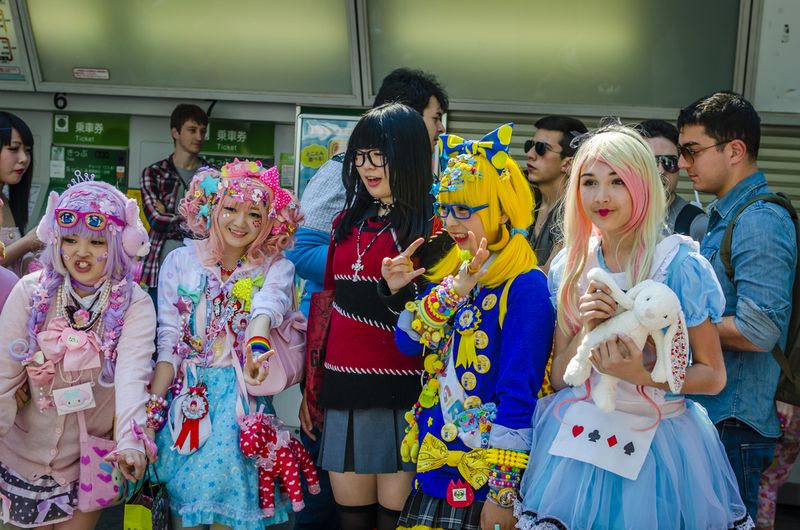
Advertisement
9. Sample Some Sushi
Grab your chopsticks and prepare to indulge in the finest of Japanese cuisine. Contrary to popular belief, “sushi” just means “food on rice,” so it’s not all raw fish. For the less adventurous, try some kappa maki (cucumber rolls), a perennial favorite thanks to its association with the Japanese water sprite, or ask about BBQ eel and tamago (egg). If you’re really brave, try some sashimi, which are premium cuts of seafood served raw and without garnish. Grab an Asahi beer or try some sake (hot or cold, depending on the season) to compliment your meal.
Not your style? Not to worry—Japanese cuisine has more to offer than sushi, including tempura, teriyaki and the massively popular udon noodles. There are 2 great reasons to eat traditional Japanese cuisine while you’re in Tokyo: 1) It’s traditionally prepared and fresh, making it superior to imitations found in other countries; and 2) Tokyo has the most Michelin-starred restaurants in Japan, including 8 3-starred restaurants. Of those top 8, 2 sushi houses and 3 traditional Japanese cuisine restaurants made the cut.
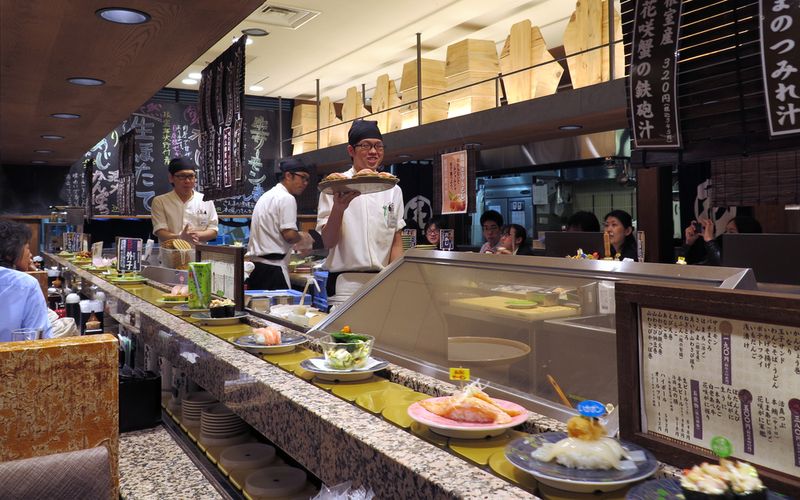
Advertisement
8. Explore the Imperial Palace Gardens
Tokyo is home to the Japanese Emperor and his family, and has been for around 150 years now. Edo Castle was once that home of the powerful Tokugawa family, who ruled Japan between the early 1600s and the beginning of the Meiji era in the 19th century. In 1869, the Emperor moved from Kyoto, turning Edo Castle into the Imperial Palace. Most of the Edo-period structures disappeared during the Meiji era. The Meiji palace, in turn, was destroyed during World War II. The palace today, Kyuden, has changed very little and is generally closed to the public, except on New Year’s Day and the Emperor’s birthday.
The East Garden and the Imperial Household Agency are open to the public, as are Kitonamaru Park and the outer gardens of the palace, which are both public parks. The Museum of the Imperial Archives are located in the East Garden. The museum includes over 6,000 pieces donated by the Imperial family, many of which are works of art by Imperial Household artists. Artists whose works are on display include Takeuchi Seiho and Wang Xizhi, a Chinese calligrapher, and the monk Kukai.
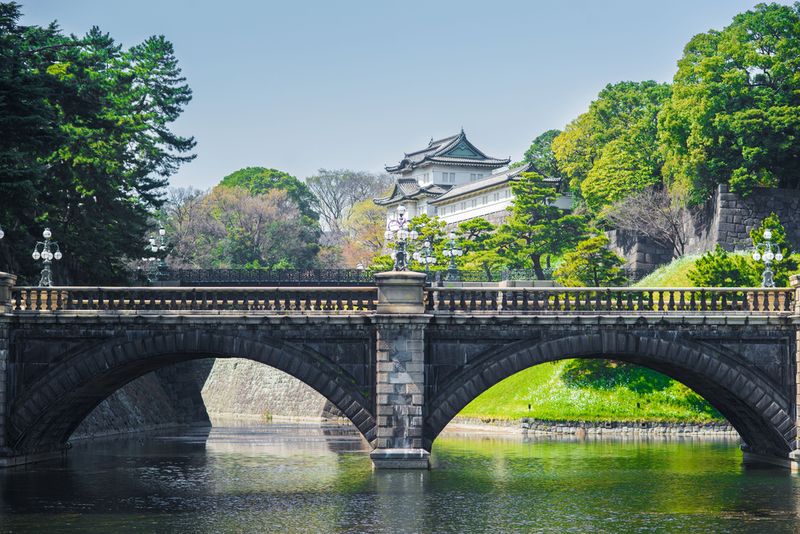
Advertisement
7. Visit Meiji Shrine
The Meiji Emperor ruled during the 19th century over a rather troubled Japan, one that had just been contacted by Americans, gone through a bloody revolution that overthrew the Tokugawa regime and had witnessed the brutal suppression of Chinese rebellion during the Opium Wars. The Japanese were quite convinced they needed to modernize—and along Western lines. The Meiji Emperor presided over that modernization. When the Emperor died in 1912, the Japanese Senate voted to commemorate the Emperor’s role in the Meiji Restoration. The Emperor and Empress were deified and the shrine was completed in 1926.
Most of the original shrine was destroyed during World War II, but a new shrine was erected in 1958. Today, the shrine is surrounded by approximately 175 acres of forest and is regarded as a place of calm and recreation by many people in Tokyo. Naien, the inner precinct, houses the shrine and related buildings, including a museum of treasures that belonged to the Emperor and the Empress. The outer precinct, Gaien, includes a picture gallery and several sports venues.
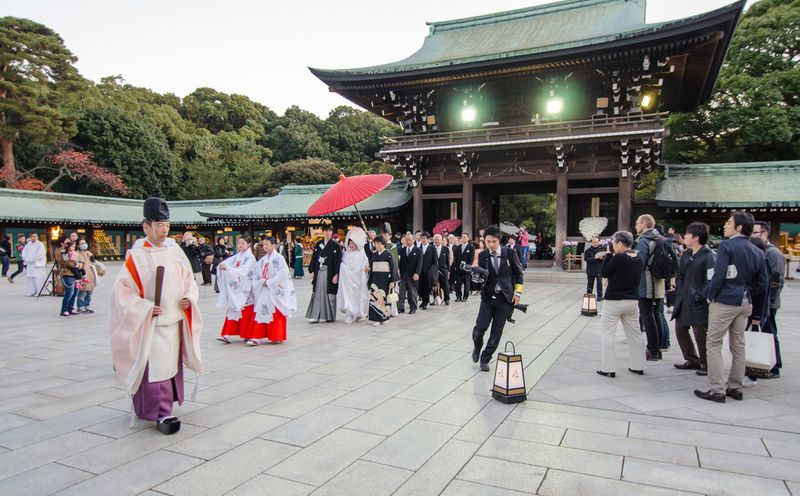
Advertisement
6. Discover Otaku Culture in Akihabara
Another of Tokyo’s famous districts, Akihabara was once known as “Electric Town.” In the post–World War II period, the area became a major shopping center for electronics and household appliances, as well as for a thriving black market. In the 1980s, the focus of business in the area shifted to computers, which brought in a new type of customer: otaku.
“Otaku” originally meant someone with obsessive interests, although it came to be associated with a murder in 1989. Today, “otaku” is a less charged term and many people self-identify as otaku and those that do are pandered to by businesses in the Akihabara region. Originally computer nerds, then anime and manga fans, were the primary customers of the various electronics shops, comic shops and maid cafes located here. Cosplayers and conventions are not unusual sights on the streets, and many anime mascots are visible in window displays. Akihabara tries to recreate video game and anime worlds in the physical realm and the imagery used to achieve that effect has earned the district worldwide fame.
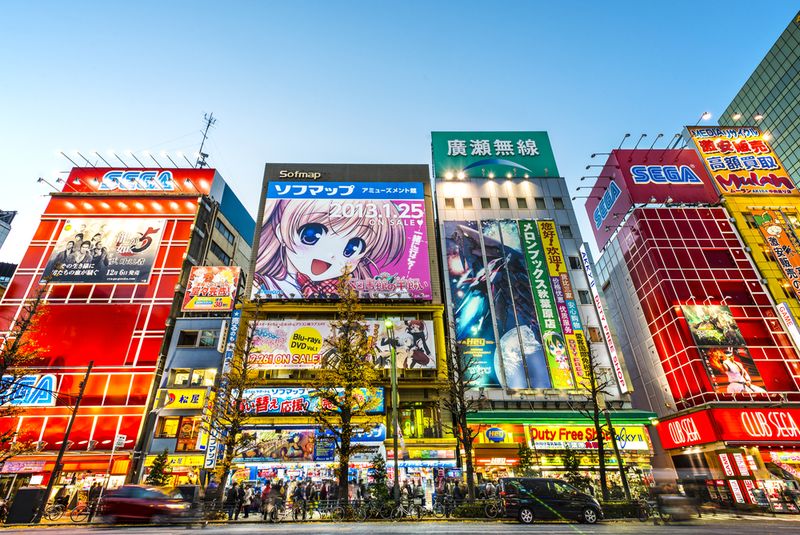
Advertisement
5. Visit the Tsukiji Fish Market
Having trouble adjusting to the time change after your long flight to the land of the rising sun? No worries; visiting the Tsukiji Fish Market has become a popular pastime for tourists. The market opens around 3 a.m., and the auctions start just before 5:30, ending around 7 a.m. Activity tapers off after 8, and by the afternoon, the market closes.
The Tsukiji market is the largest fish auction in the world and one of the largest wholesale food markets of any kind. Visitors are allowed to enter between 5 and 6:15 in the morning and observe the auctions from a designated area. Entry to the wholesale market itself is banned until 9, when visitors may enter the auction floor. Outside, there are many stalls that sell seafood, sushi and kitchen wares, which are a major tourist attraction. If you’re still suffering jetlag, get up before the sun and head down to Tsukiji. Watch the auctions, shop the shops, grab some fresh sushi and then head over to nearby Ginza.
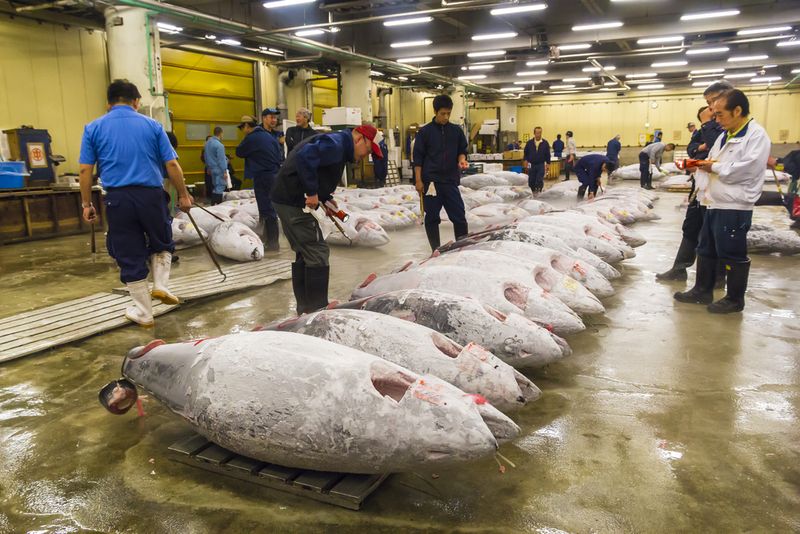
Advertisement
4. Go Clubbing in Roppongi
Tokyo might be the capital of the land of the rising sun, but that doesn’t mean that nothing fun happens after dark. If you need more proof, look no further than Roppongi, the infamous nightlife district of Tokyo. Beginning in the 1960s, the area became a hot-spot for Japanese youth and foreign visitors who were attracted to the disco scene. The recession of the late 1990s hit Roppongi hard, with many dance clubs closing, but the scene has been revitalized in the past decade, and there are plenty of bars, nightclubs, restaurants, hostess and strip clubs, and cabarets.
Roppongi generally caters to a younger crowd, but several upscale high-rise developments and a number of embassies are in the area meaning the crowd is mixed. The area has a large expatriate community as well, so it’s not unusual to find business people, students or off-duty American military personnel. As such, Roppongi has a reputation as being a gathering spot for non-Japanese. More recently, the district has been gaining a reputation for organized events, which include pub crawls, art festivals, pool tournaments and other competitions.
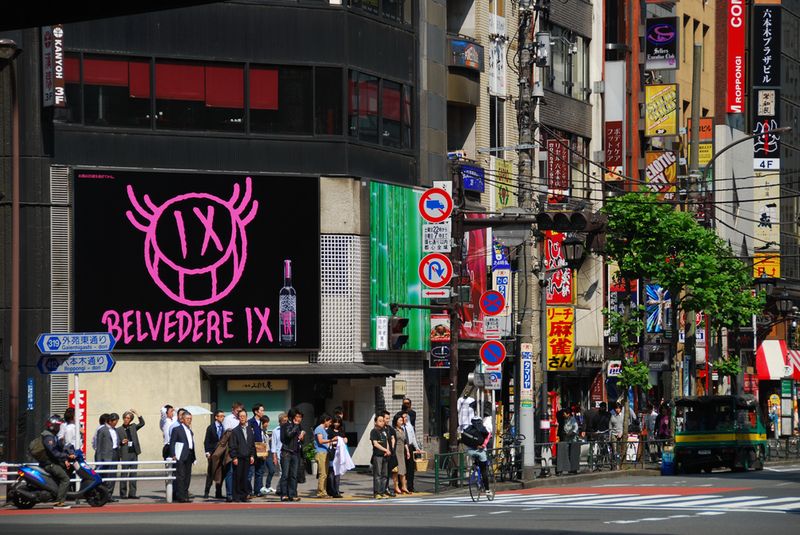
Advertisement
3. Hike Mount Fuji
Just 60 miles southwest of Tokyo lies Mount Fuji, the highest peak in Japan. Fuji can be seen from Tokyo, commonly forming the backdrop to the skyline, and its snow-capped peak has inspired generations of Japanese artists and poets. Today, the mountain is an incredibly popular climbing area with many Japanese and foreign tourists ascending the mountain. There are 4 main paths that lead to the summit, with huts and rest stations along the way. These paths do not start from the foot of the mountain, but from the 5th station. Most Japanese climbers ascend during the night, so that they can be at the summit for daybreak. The 4 paths from the foot of the mountain are undergoing revitalization, but there is some concern due to Aokigahara.
Aokigahara is the forest on the northwest side of Fuji and it is the second-most popular suicide destination in the world. Folklore suggests the forest is haunted. Nonetheless, hikers can travel on trails to the Ice Cave and the Wind Cave, although it is easy to become lost in the dense forest.
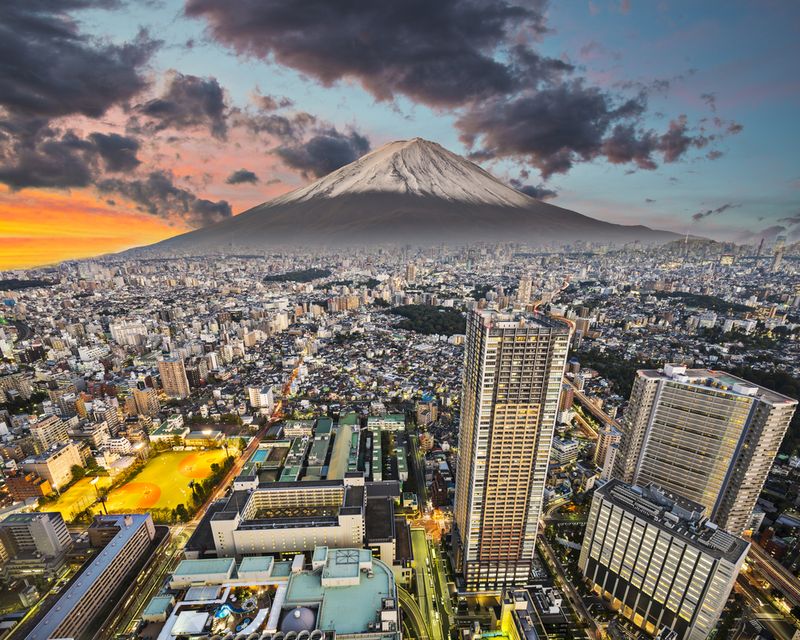
Advertisement
2. Catch a Noh or Kabuki Play
Japan has a rich culture and over the centuries, various forms of art and entertainment that are uniquely Japanese have emerged. Two good examples are noh and kabuki, 2 distinctly Japanese forms of theater. Noh performances use masks to identify different characters and traditionally tell folktales through dance and stylized motion. Highly codified and traditional, noh can be seen at the National Noh Theater in Tokyo.
Kabuki, another of Japan’s traditional performing arts, focuses less on dance and more on drama. Kabuki is highly stylized, but often in a bizarre or exaggerated way. Originally intended for the middle class, kabuki is today the most popular traditional form of entertainment in Japan. You can buy a ticket to a whole-day performance or an individual act at Kabuki-za, Tokyo’s principle theater for kabuki, almost any day of the week. The playbills change on a monthly basis and the building is located in Ginza. One of the most famous plays tells the story of the 47 Ronin.
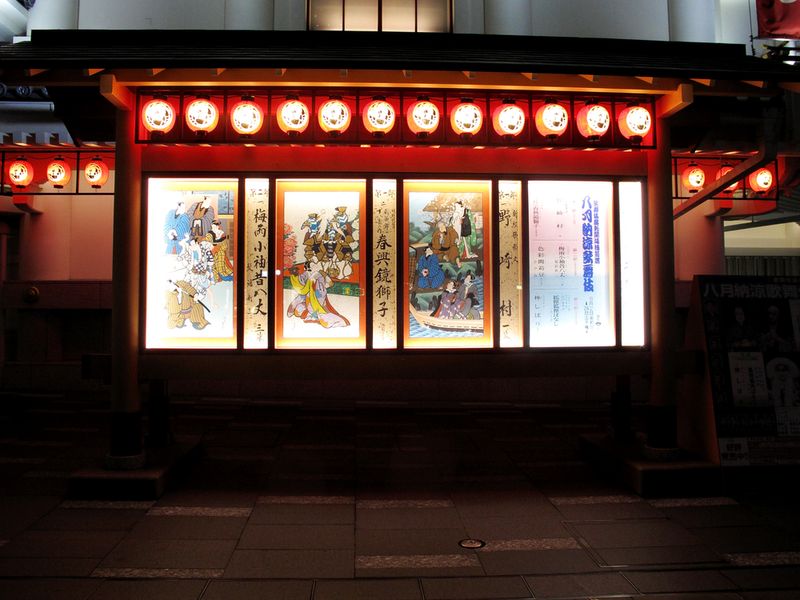
Advertisement
1. Visit the Tokyo National Museum
As the capital of Japan, Tokyo has its fair share of museums. Many of them house large collections of national treasures in various areas, such as the Japan National Archives, the National Museum of Modern Art and the Nezu Museum. The largest of all museums in Tokyo—and in Japan—is the Tokyo National Museum, which specializes in traditional Japanese art. It is also the oldest national museum in the country, having been founded in 1872.
The museum is ranked 37th in the world in terms of traffic, seeing 1.4 million visitors annually. The collection contains over 110,000 items, including 87 National Treasure holdings and 610 items designated as Important Cultural Property. The focus of the collection is on art and archaeological artifacts from Asia, with the Honkan building devoted entirely to the art and artifacts of Japan. The Toyokan Gallery displays objects from Pakistan, India, China and Korea, as well as other countries. The Heiseikan focuses on archaeological artifacts that show the development of Japanese culture from ancient times to the pre-modern era.
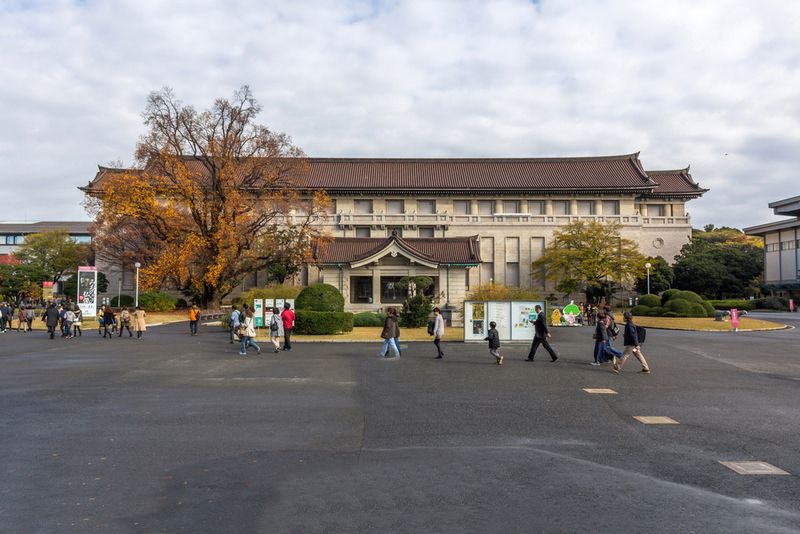
Advertisement